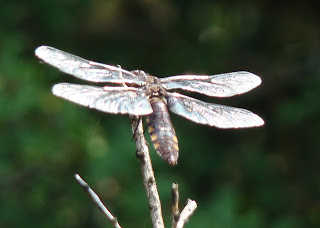 Reflecting waterlilies
Reflecting waterlilies Keeled Skimmer female
Keeled Skimmer female keeled Skimmer male
keeled Skimmer male Golden Ringed
Golden Ringed
broad Bodied chaser
Set in open meadow land to the south of

The Hospital, which is England's oldest continuing almshouse, comprises a group of grade I listed medieval and Tudor buildings, including a medieval hall and tower, Tudor cloister, Norman church and gardens reflecting a seventeenth century connection with North America. The term "Hospital", in this context, has the same origin as "hospitality" and for over 850 years St Cross has provided food and shelter to people in need. It has been home to the Master and Brethren of St Cross since medieval times and today visitors can still receive the Wayfarer's Dole (a small beaker of beer and a morsel of bread).

The octagonal chimneys mark the Brethren´s lodgings, built about 1445 by Cardinal Beaufort. On the East side of the Chapel may be seen a graveyard wherein are interred the remains of various Masters and Brethren. Apart from providing for the Brethren, Almsgiving is still practised in the form of the `Wayfarers Dole´. A piece of white bread and a cup of good beer or Ale may be obtained by knocking at the door of the Porters Lodge, and requesting the Dole.

The Chapel was started in the 1160´s and retains much of its late Norman purity, despite being somewhat altered in the 14th and early 15th centuries. The number of Brethren was enlarged in the 15th century by Cardinal Beaufort, who provided for a second order of almsmen, the `Noble Order of Poverty´. Brethren of this order wear magenta gowns.




 A lapwing at Lower Test nature reserve
A lapwing at Lower Test nature reserve Silver studded Blue in the New Forest. These butterflies are so small and very rarely stay still for long.
Silver studded Blue in the New Forest. These butterflies are so small and very rarely stay still for long. I saw this on the road it is a squashed snake,an adder I believe Sad that it died but interesting.
I saw this on the road it is a squashed snake,an adder I believe Sad that it died but interesting. The dogs on one of their walks
The dogs on one of their walks Its been a busy time hers and I have not had much time for blogging so just a few photos from our recent walks.
Its been a busy time hers and I have not had much time for blogging so just a few photos from our recent walks.
 There were plenty of ponies down at the pond trying to scounge food off the tourists. There is a penalty for feeding the ponies as it encourages them to congregate near cars and on the roads. Sadly many tourists ignore this and the ponies can become a nuisance in the popular spots. more seriously if they stay near the roads they are knocked down and killed.
There were plenty of ponies down at the pond trying to scounge food off the tourists. There is a penalty for feeding the ponies as it encourages them to congregate near cars and on the roads. Sadly many tourists ignore this and the ponies can become a nuisance in the popular spots. more seriously if they stay near the roads they are knocked down and killed.
 The seven cygnets are doing well and have grown a lot since our last visit.
The seven cygnets are doing well and have grown a lot since our last visit.
A Forest diary. A photo diary of life wih two Flatcoated Retrievers ,living on the edge of Englands New Forest National Park.
A Forest diary. A photo diary of life wih two Flatcoated Retrievers ,living on the edge of Englands New Forest National Park.